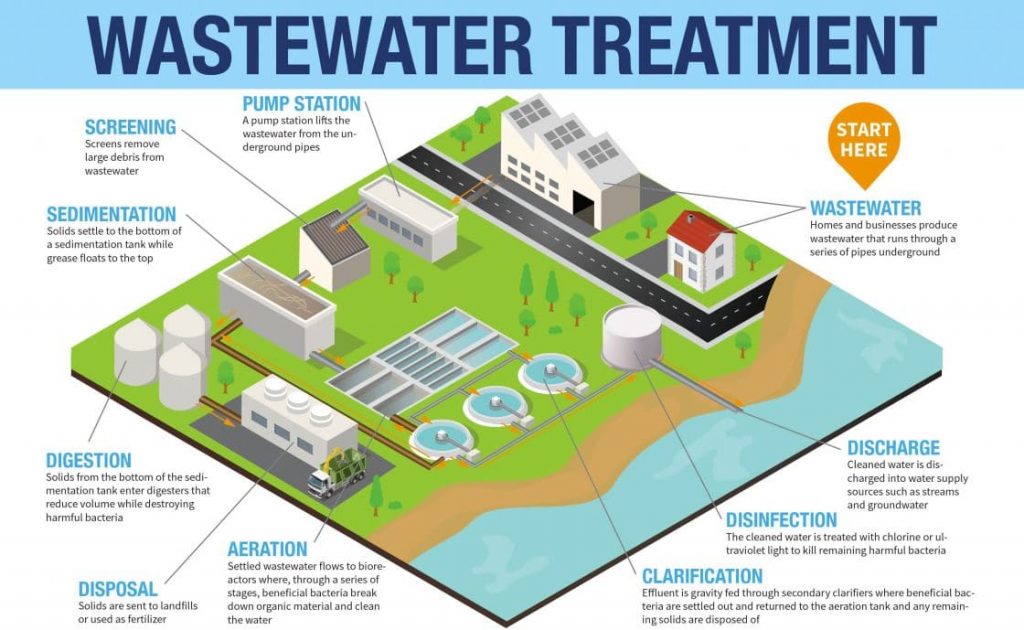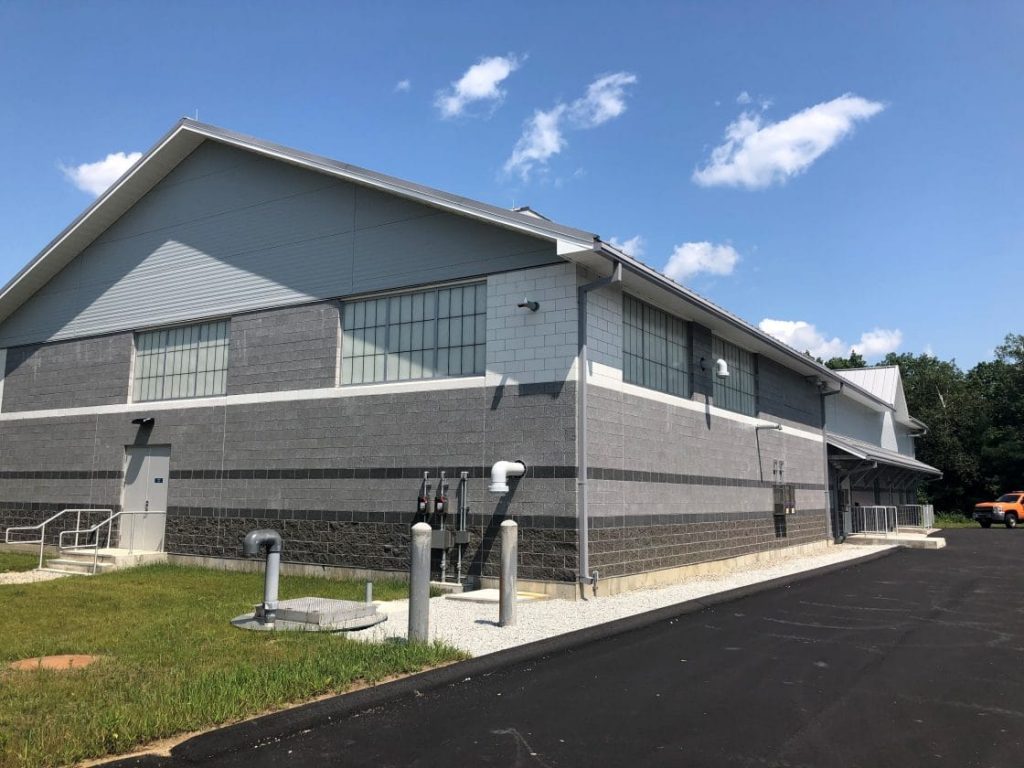Every day we encounter wastewater. We create it through flushing the toilet, washing our hands, taking showers, running the dishwasher, and more. In fact, all water affected by human use is wastewater. Although it’s a constant part of our lives, wastewater is often overlooked. Have you ever thought about what happens to the water we flush away? Where does it go? How does it get treated? Do we use it again? Read on to learn about the ways in which we utilize treated wastewater, particularly through direct potable reuse and indirect potable reuse.
The Quick (and Dirty)
The wastewater treatment process begins the second a drop of water goes down the drain. That water becomes sewage – which is 99 percent dirty water. The other one percent is made up of solids, chemicals, fats, nutrients, and other miscellaneous matter. From here, water travels within the sewage network through pipes, pumps, and plants for treatment. First in this process is the screening of large objects and debris from the water. Next, bacteria, contaminants, organic, and inorganic matter are removed through digestion and aeration processes. Within these phases, nutrients such as nitrogen and phosphorus are reduced to protect the environment and support our communities. When the water is clean, it then goes on to be clarified and disinfected with chlorine or ultraviolet light.

A Bright Idea
For as long as time, humans have relied on the natural water cycle to obtain drinking water. From the days of sifting water from brooks to later advancements including drinking water treatment facilities – the source of our drinking water has always come from surface or groundwater. When water is plentiful, we source it from watersheds and treat it to drinking water standards. But what happens when water supplies run low? When there is less rain and more demand for water? One solution is potable water reuse – the notion of reusing the used water we normally discard for drinking. The two types of potable water reuse are indirect potable reuse and direct potable reuse.
Indirect Potable Reuse
Indirect potable reuse (IPR) is more common and has been successfully used within the United States for the last 50 years. With IPR, water is first treated at a wastewater treatment facility. It is then pumped into a natural basin or reservoir where it is filtered naturally through the ground before being sent back into the water supply. The downside of IPR is that the water gets ‘dirty’ all over again and needs to be treated once more before it is safe to drink.
Direct Potable Reuse
On the contrary, direct portable reuse (DPR) is a fairly new concept and involves the treatment and distribution of water without an environmental buffer. In this process, the very clean water from the advanced water purification plant is put straight back into the water supply. These advanced purification systems are used by utilities around the world and process and test the water supply to ensure standards are met.

The first DPR system was implemented about five years ago in Big Spring, TX to face the state’s relentless droughts. The DPR system at the Colorado River Municipal Water District in Big Spring takes treated wastewater, purifies it, and then mixes it with the city’s regular water supply. Eventually, water heads back to consumers’ taps.
Although the DPR process is new in the grand scheme of things, it has proven to be effective. As we face global climate change and recognize drinking water as the valuable resource it is, innovations like DPR are certainly beneficial.
What are your thoughts on DPR?
